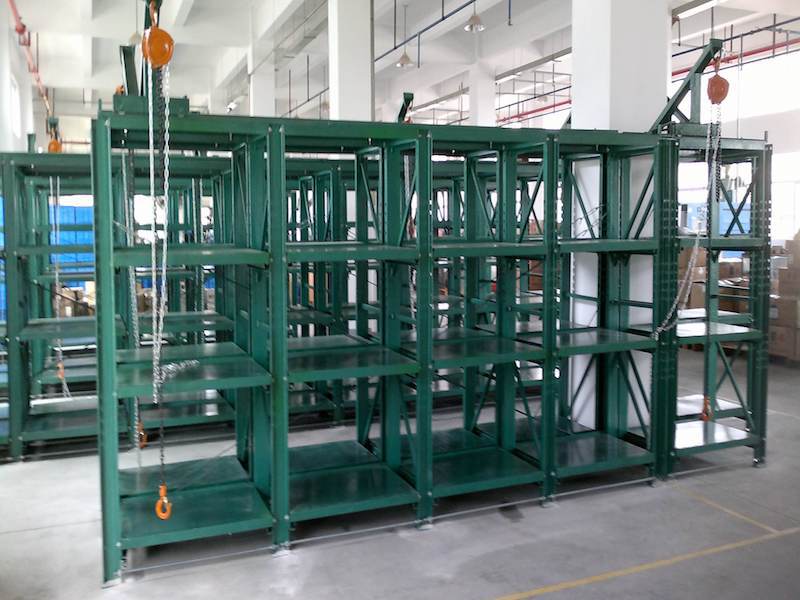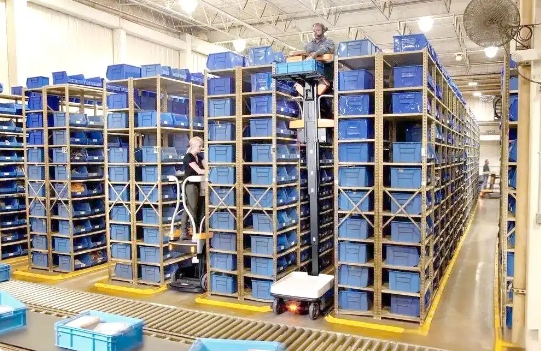In the relentless pursuit of warehouse efficiency, speed, and accuracy, the automated storage racking system has moved from a high-tech luxury to a core component of modern logistics strategy. These systems are no longer just about storing goods; they are about creating a dynamic, high-density, and intelligent backbone for your entire operation. However, with a variety of technologies available, selecting the right system is a significant decision that requires a clear understanding of your needs and the options on the market. This guide cuts through the complexity to provide a practical framework for evaluating and selecting the ideal automated storage racking system for your facility.

At its heart, an automated storage racking system is an integrated solution that combines physical racking structures with robotic or mechanized technology to store and retrieve items with minimal human intervention. Unlike traditional static shelving, these systems are commanded by sophisticated software—a Warehouse Management System (WMS) or Warehouse Control System (WCS)—that dictates every movement, ensuring perfect inventory synchronization and operational flow.
The primary goal is to maximize space utilization, drastically reduce labor costs, eliminate human error, and accelerate throughput. By integrating storage and retrieval machines, conveyors, and software, these systems create a seamless, high-speed workflow that can operate around the clock.
Not all automation is created equal. The most suitable type of automated racking system for your business depends heavily on your product profile, throughput requirements, and available space. Here are the predominant types:
1. Unit-Load AS/RS (Automated Storage and Retrieval Systems)
Designed for handling palletized goods or large, heavy loads, these are the workhorses of industrial automation. They typically feature tall, dense racking structures served by dedicated aisle-changing cranes.
Best For: Manufacturing plants, cold storage facilities, and distribution centers with high-volume pallet handling.
Benefits: Extremely high space utilization, ability to handle very heavy loads, and superior inventory control for pallet-level tracking.
2. Mini-Load AS/RS
These systems are engineered for smaller items stored in bins or totes. The retrieval machine, often a shuttle, operates within the rack structure to bring entire bins or specific items to a pick station.
Best For: E-commerce fulfillment, spare parts distribution, and any operation dealing with a high SKU count of small parts.
Benefits: Dramatically improves order picking accuracy and speed, reduces walking and searching time for personnel, and optimizes storage for small items.
3. Shuttle-Based Systems
This technology utilizes autonomous, battery-powered shuttles that run on rails within a rack level. They transport pallets or bins from the pickup point to a storage location and back. Shuttles can be deployed for deep-lane storage, making them incredibly space-efficient.
Best For: High-density storage with high throughput needs, especially in applications with strong FIFO (First-In, First-Out) or LIFO (Last-In, First-Out) requirements. Common in the food and beverage and pharmaceutical industries.
Benefits: Excellent scalability (you can add more shuttles), high speed, and superior density compared to traditional AS/RS cranes in certain configurations.
4. Vertical Lift Modules (VLMs) and Vertical Carousels
These are enclosed, footprint-optimized systems that use an extractor tray to bring items directly to the operator at an ergonomic "window" or "workstation." VLMs store items in trays that are retrieved vertically, while carousels rotate vertically like a ferris wheel.
Best For: Tool rooms, maintenance depots, and manufacturing assembly lines where floor space is limited and parts are frequently accessed.
Benefits: Maximizes vertical space, creates a highly secure and organized environment, and can improve operator productivity by over 50%.

Implementing an automated pallet racking system or a mini-load solution delivers a cascade of operational advantages.
Radical Space Savings: By building upwards and reducing aisle widths to the minimum required for machinery, these systems can often double or triple your existing storage capacity within the same footprint.
Labor Optimization and Cost Reduction: Automation handles the repetitive, physically demanding tasks of storing and retrieving. This allows your workforce to be redeployed to higher-value tasks like quality control, packaging, and system management, leading to significant long-term labor savings.
Unmatched Accuracy and Traceability: With software directing every transaction, mis-picks and lost inventory become virtually nonexistent. Every item's location is known in real-time, providing complete traceability and reliable data for inventory counts.
Enhanced Workplace Safety: By removing forklifts and manual labor from the storage aisles, the risk of accidents, product damage, and workplace injuries is drastically reduced.
Scalability for Future Growth: A well-designed automated storage racking system can be modular. You can often add more racks, shuttles, or modules as your business expands, protecting your initial investment.
Choosing the right system is a strategic process. Rushing this decision can lead to costly mismatches. Use this framework to guide your evaluation.
Assess Your Inventory Profile
Begin with a deep analysis of your SKUs. What are their dimensions, weights, and handling requirements? How many SKUs do you have? What is your turnover rate for each (ABC analysis)? A unit-load automated racking system is ideal for uniform pallets, while a diverse range of small items points towards a mini-load AS/RS or VLM.
Analyze Throughput Requirements
How many orders do you process per day? What are your peak season volumes? You must quantify your inbound and outbound transaction speeds. A shuttle system might offer faster cycle times for certain layouts, while a traditional AS/RS might be more robust for very high, consistent pallet volumes.
Evaluate Integration Capabilities
The hardware is only one part of the equation. The automated storage system must integrate flawlessly with your existing Enterprise Resource Planning (ERP), WMS, and other operational software. Ensure the provider has a proven track record of seamless software integration.
Calculate the Total Cost of Ownership (TCO)
Look beyond the initial purchase price. Consider installation costs, ongoing maintenance, energy consumption, and the potential cost of future expansions. A slightly more expensive system with higher reliability and lower maintenance needs may offer a better TCO.
Plan for Implementation and Support
The installation of an automated racking system is a significant project. Understand the timeline, the disruption to your current operations, and the training required for your staff. Post-installation, reliable technical support and readily available spare parts are non-negotiable for maintaining uptime.
Investing in an automated storage racking system is a transformative step that can redefine the efficiency and competitiveness of your logistics operation. It is not merely a purchase of equipment but an investment in a smarter, faster, and more resilient supply chain. By methodically analyzing your inventory, throughput, and operational goals, you can move beyond the hype and select a robust, scalable automated storage system that will deliver a powerful return on investment for years to come. The future of warehousing is intelligent, dense, and automated—and the time to plan your move is now.
Q1: What is the typical payback period for an automated storage racking system?
A1: The payback period can vary widely based on the system's scale and complexity, and the specific operational efficiencies gained. Typically, businesses see a return on investment within 2 to 5 years. This is achieved through significant labor savings, reduced real estate costs from higher density, lower energy costs (especially in cold storage), and a dramatic reduction in inventory shrinkage and picking errors.
Q2: Can an automated storage system be retrofitted into an existing warehouse?
A2: Yes, in many cases, an automated storage racking system can be designed to fit within an existing building. However, critical factors must be assessed, including ceiling height, floor flatness, column spacing, and the existing fire suppression system. A thorough site survey by a qualified engineer is an essential first step to determine feasibility.
Q3: How does the software for an automated system work with our current WMS?
A3: The automated storage system is typically managed by a Warehouse Control System (WCS), which acts as a translator between your high-level Warehouse Management System (WMS) and the physical machinery. Your WMS sends commands like "retrieve this pallet," and the WCS optimizes and executes these commands, directing the cranes, shuttles, and conveyors. Proper integration between WMS and WCS is crucial for smooth operation.
Q4: What happens if the automated system breaks down? How do we access our inventory?
A4: Redundancy and service support are key considerations. Reputable systems are designed with reliability in mind and often have manual recovery modes. For instance, a unit-load AS/RS might have a manual operating mode for the crane, or a shuttle system may allow for manual retrieval in a specific aisle. A comprehensive service agreement with guaranteed response times is vital to minimize downtime.
Q5: Are these systems only suitable for large corporations?
A5: Absolutely not. While large, unit-load systems are common in massive DCs, automation technology has become far more accessible. Smaller-scale solutions like Vertical Lift Modules (VLMs) and horizontal carousels are perfectly suited for small to medium-sized businesses. The ROI is often compelling for any company struggling with labor shortages, space constraints, or accuracy issues, regardless of size.
 Wechat
Wechat
 Whatsapp
Whatsapp